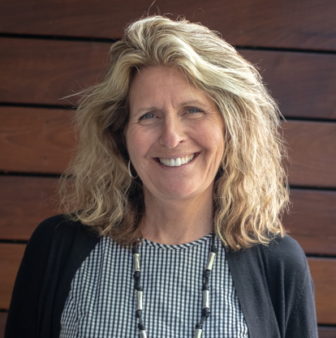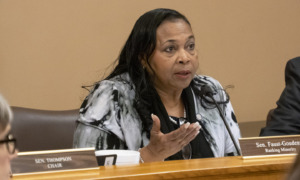 DMYTRO-ZINKEVYCH/SHUTTERSTOCK
DMYTRO-ZINKEVYCH/SHUTTERSTOCK
The Santa Clara County (California) Board of Supervisors approved in May a basic income pilot program for youth who are transitioning out of foster care. I applaud the board for taking this valuable step toward improving life outcomes for foster youth in Santa Clara County. The first program of its kind in our country, it sets a powerful precedent for other counties to follow and demonstrates Santa Clara County’s commitment to reversing the negative trends that prevent so many foster youth from achieving their dreams for success.
Pivotal scholarship recipients who are in Santa Clara County extended foster care report an average monthly income of $1,500 per month. Here in Silicon Valley, where $1,500 is not enough to even rent a studio apartment, most of Pivotal’s college scholars must work part time or full time to survive. Basic student expenses like rent, groceries, clothing, transportation, utility bills, textbooks and tuition all add up quickly.
The pilot program provides unconditional cash payments of $1,000 to 72 youth between the ages of 21 and 24, with priority given to those closer to 24. It levels their playing field just a little bit more and makes it possible for these youth to pursue the skills training they need to reach a life of self-sufficiency. While 89% of foster youth want to go to college, only 3% graduate. Left to fend for themselves when they emancipate from the foster care system at age 21, they face an impossible choice: Pay the rent today or stay the course to achieve success tomorrow.
Young people enter the foster care system because they are born into families who are almost surely struggling with poverty and could be challenged by issues of addiction and mental health. Shuffling from foster home to foster home, school to school, and leaving friends and family behind each time is no easy feat and often leads to additional trauma. But, with each challenge, foster youth build up their resilience. A fellow board member who grew up in foster care likes to say, “We know how to navigate choppy waters.”
When we remove children from the care of the only families they have, we assume we can do better. Unfortunately, that’s not always the case. The statistics around foster youth who are transitioning out of care are bleak. By age 18, 25% of foster youth are homeless, 20% are incarcerated, and 50% drop out of high school. Once in foster care, youth must adhere to county mandates around which school they’ll attend, which family they’ll live with and when their next move will be. What do you want for yourself is not a question they’ve been asked as foster youth. Yet, it’s the most important one to ask, for it is key to knowing which tools and support they need to thrive.
The prevalence of racial disproportionality and disparity in the child welfare system is troubling as well. Despite the fact that children of all races are equally as likely to suffer from abuse and neglect, there is a significantly greater proportion of African-American children in foster care than children of other races and ethnicities. Indeed, African-American children are represented in foster care 1.8 times their rate in the general population. Youth from communities of color need the opportunity to pull themselves up. You can’t pull yourself up by the bootstraps if you don’t have bootstraps to begin with.
What foster youth need next
In the year ahead, Pivotal is investing in financial literacy training for our youth to prepare them with such skills as how to open checking and savings accounts, why interest rates matter when taking out a loan, what a credit report is and why identity theft is something to worry about. Critics will say that we can’t trust youth to use an additional payment of $1,000 per month wisely. I disagree. We must trust that our scholars will use this money wisely. After all, foster youth don’t want to just survive; they want to thrive.

Elise Cutini
Make no mistake. The Basic Income Pilot Program is not the end-all. There is so much more we still must do. We must continue to provide foster youth with the education and employment support they need to graduate high school, develop professional work experience and earn a vocational or college degree. We must activate partnerships and opportunities that help foster youth build valuable academic, employment and life skills and experiences so they are competitive job candidates. We must show them that no matter what they’ve gone through, we are looking out for them and we are on their side.
No agency can do this work alone. It takes a village of partners and supporters to break the cycle and mobilize our community to change the odds for foster youth. Being in foster care shouldn’t prevent them from determining the life they want. Foster youth deserve a team of key players who are aligned and working in coordination to make their experience in the system as positive as possible.
It starts with building a culture of awareness and understanding of their world and their desires. Creative solutions like the basic income program are key to moving the needle and to helping foster youth thrive. But it will take more. Now is the time for more collaborations between county leaders and their nonprofit allies who have boots on the ground. Let’s roll up our sleeves and get things done.
Elise Cutini has served as CEO at Pivotal since 2007. Before working in the nonprofit sector, She co-founded ITC Associates, Inc., a management consulting firm in Silicon Valley.
This column has been updated.































